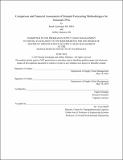| dc.description.abstract | Forecast accuracy is an ongoing challenge for made-to-stock companies. For highly seasonal fast-moving consumer packaged goods (CPGs) companies like King’s Hawaiian, an improved forecast accuracy can have significant financial benefits. Traditional time series forecasting methods are quick to build and simple to run, but with the proliferation of available data and decreasing cost of computational power, time series’ position as the most cost-effective demand forecasting method is now in question. Machine learning demand forecasting is increasingly offered as an improved alternative to traditional statistical techniques, but can this advanced analytical approach deliver more value than the cost to implement and maintain? To answer this question, we created a three-dimensional evaluation (cube search) across five unique models with varying pairs of hyper-parameters and eight different data sets with different features to identify the most accurate model. The selected model was then compared to the current statistical approach used at King’s Hawaiian to determine not just the impact on forecast accuracy but the change in required safety stock. Our approach identified a machine learning model, trained on data that included features beyond the traditional data set, that resulted in a nearly 4% improvement in the annual forecast accuracy over the current statistical approach. The decrease in the value of the safety stock as a result of the lower forecast variation offsets the incremental costs of data and personnel required to run the more advanced model. The research demonstrates that a machine learning model can outperform traditional approaches for highly seasonal CPGs with sufficient cost savings to justify the implementation. Our research helps frame the financial implications associated with adopting advanced analytic techniques like machine learning. The benefits of this research extend beyond King’s Hawaiian to companies with similar characteristics that are facing this decision. | en_US |
